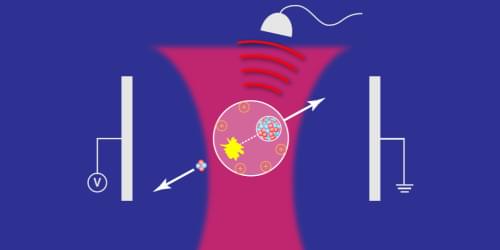A levitating microparticle is observed to recoil when a nucleus embedded in the particle decays—opening the door to future searches of invisible decay products.
For centuries, physicists have exploited momentum conservation as a powerful means to analyze dynamical processes, from billiard-ball collisions to galaxy formation to subatomic particle creation in accelerators. David Moore and his research team at Yale University have now put this approach to work in a new setting: they used momentum conservation to determine when a radioactive atom emitted a single helium nucleus, known as an alpha particle (Fig. 1) [1]. The demonstration suggests that—with further improvements—researchers might be able to use this technique to detect other nuclear-decay products, such as neutrinos and hypothetical dark-matter particles (see also Special Feature: Sensing a Nuclear Kick on a Speck of Dust).
The basic idea is simple: if the radioactive atom is embedded in a larger object, then an outgoing decay product will exert a backreaction on that object, causing it to recoil in the opposite direction. But is it really possible to detect the recoil kick from a particle as small as a helium nucleus? The answer lies in how precisely we can measure the larger object’s momentum. One of the main limitations is friction: if the larger object is slowed down by frictional forces, then its motion won’t reflect the impulse from the decaying particle.
